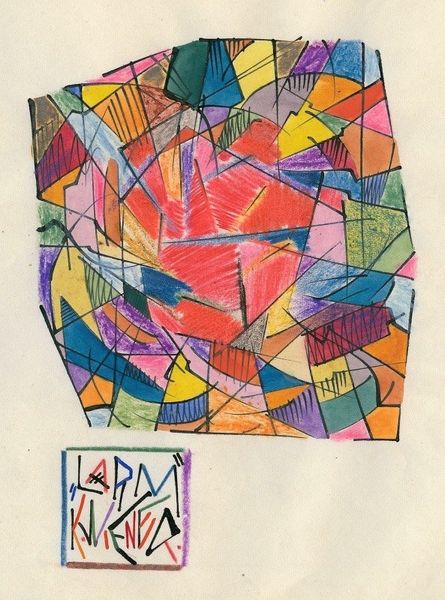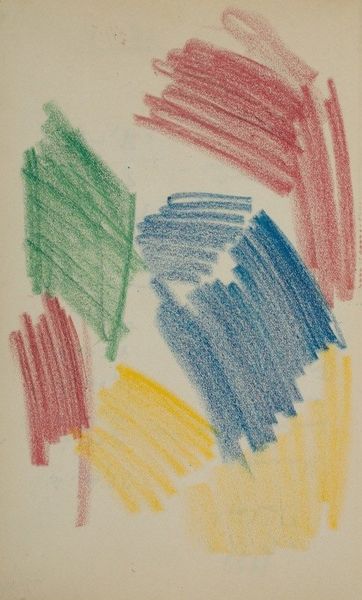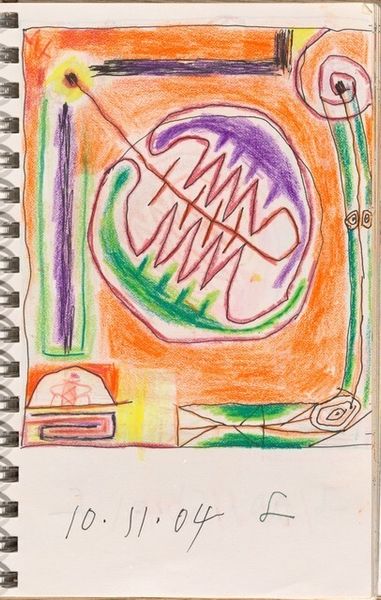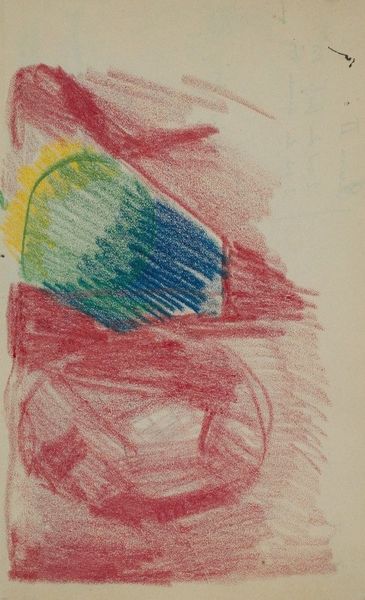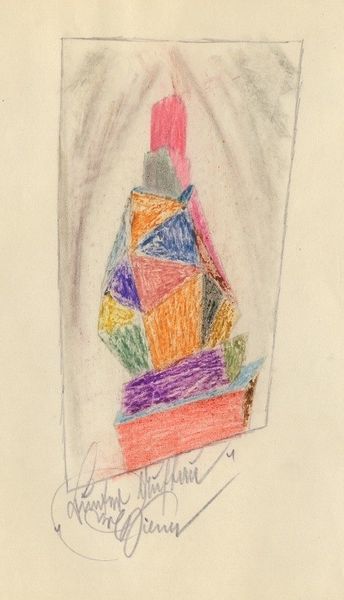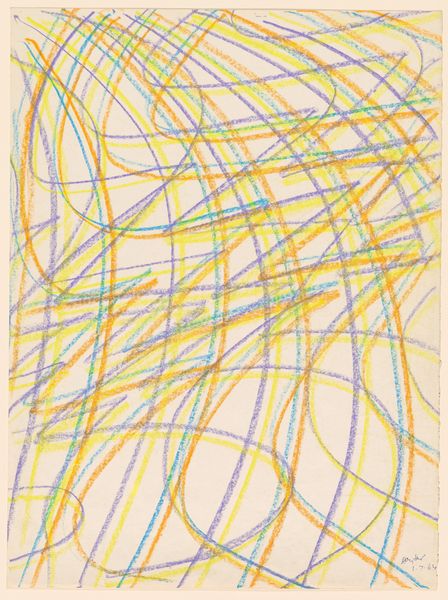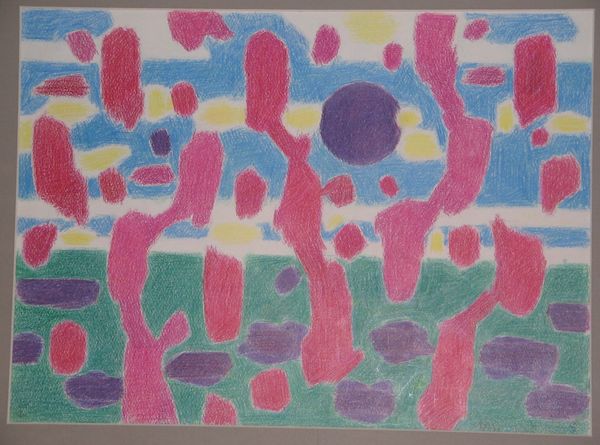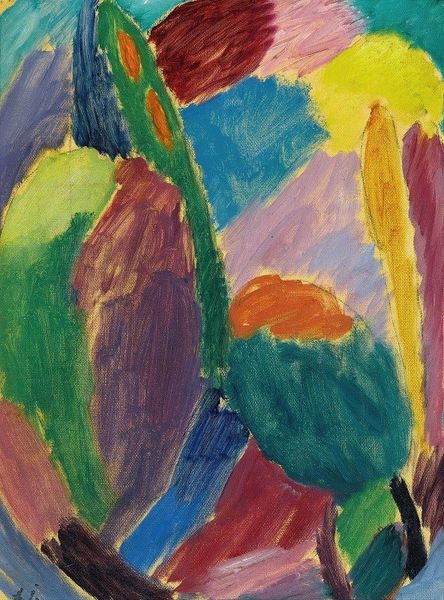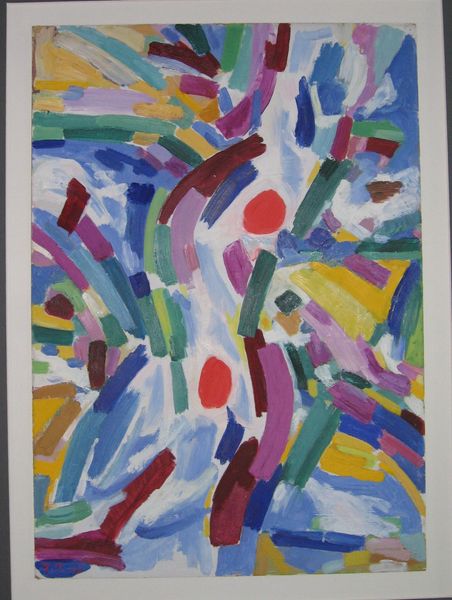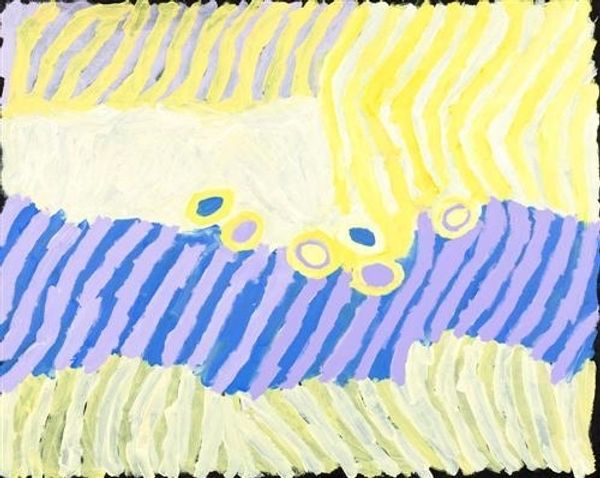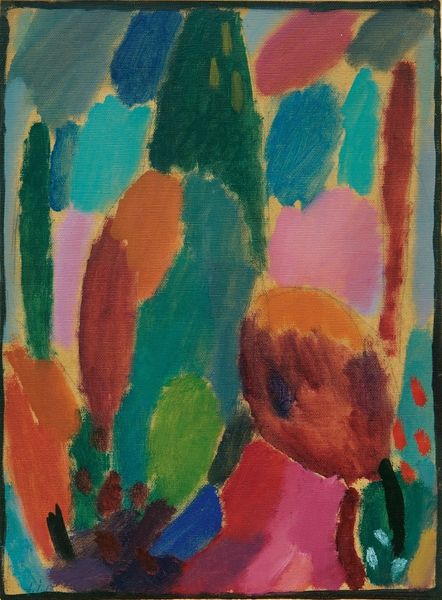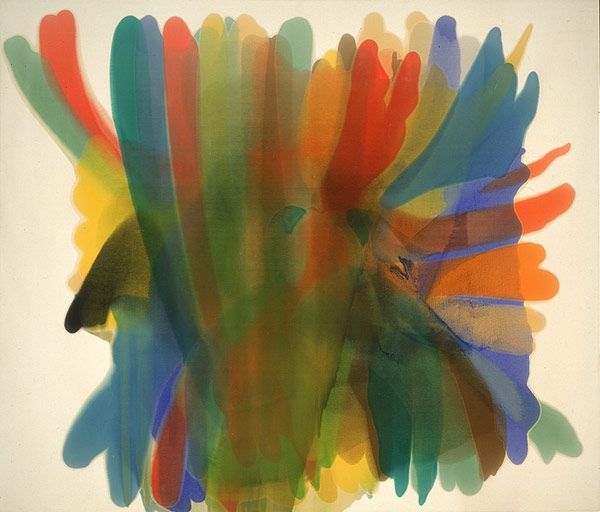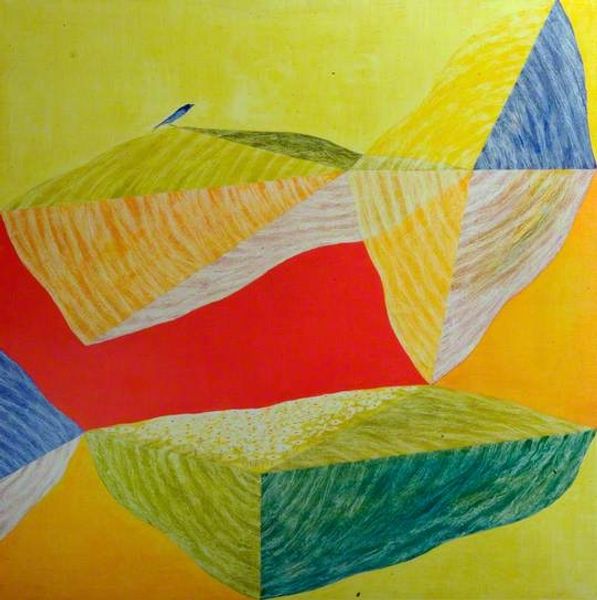
drawing, coloured-pencil
#
pencil drawn
#
drawing
#
coloured-pencil
#
abstract
#
form
#
coloured pencil
#
geometric
#
abstraction
#
line
Copyright: Public Domain: Artvee
Curator: Here we have Karl Wiener’s “Zorn,” created around 1923 using colored pencils. Editor: My initial thought is vibrant chaos! The colors are saturated, and the shapes seem to be fighting for space. Curator: It’s an interesting contrast, isn't it? Wiener employs modest materials – colored pencils – to create an abstract composition brimming with intensity. The very act of using readily available, almost commonplace materials suggests an urge to democratize art making, pushing against notions of high art being the sole domain of skilled artisans. Editor: I see tension in these fractured geometric forms. There are diagonal lines battling against angular shapes, forming arrowhead-like figures. The bright colors feel almost aggressive, less celebratory and more unsettling, perhaps indicative of social turmoil or personal struggle during that time. The symbolic tension is certainly palpable. Curator: Perhaps. The layering of color also indicates an exploration of process and form, where the trace of the pencil becomes an integral part of the work. The very construction, the act of mark-making, reveals the artist’s engagement with modernist ideas of form and abstraction. The physical act becomes paramount. Editor: But what of the work's title? Zorn evokes strong cultural associations with artists of the time. The name resonates deeply, possibly representing inner turmoil and reflection during a time of war and unrest. Its fragmented forms mirror a society fractured by war and rapidly changing ideologies. Curator: Fascinating. I’m also wondering how this abstraction interacts with the tradition of drawing. Wiener manipulates readily available material, rejecting more expensive alternatives. Perhaps the drawing style echoes folk traditions while also pointing towards an industrialized form of production. Editor: And the composition feels incredibly dynamic, doesn't it? The artist may be trying to capture something essential through pure shape and color. It asks: what lies beneath appearances? Curator: The lack of an obvious narrative or figurative element puts the emphasis squarely on the means of production and visuality, reflecting material concerns as primary drivers of meaning. Editor: Considering those arrow motifs and intense coloration again, this feels less like pure formalism and more like visual coded language for the time. It feels urgent, rather personal. Curator: Considering the dialogue between color and material, Wiener urges us to examine the cultural implications of accessible media within artistic expression. Editor: Looking at it through an iconographic lens certainly opens avenues for interpretation centered around emotional expression through abstraction, too.
Comments
No comments
Be the first to comment and join the conversation on the ultimate creative platform.
